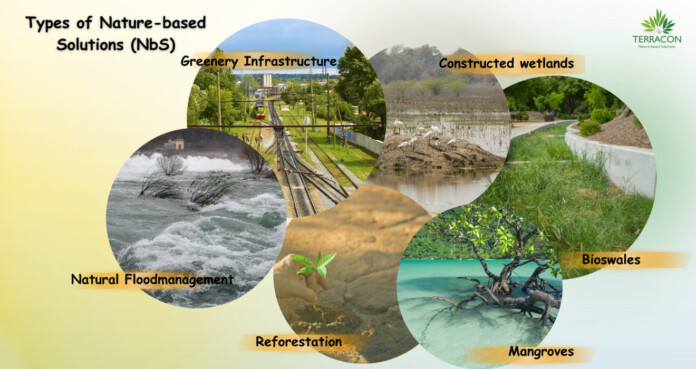The recent climate-induced disasters – record-breaking temperatures (Bengaluru recording 42 degrees and Delhi touching 52 degrees in May); floods, cloudbursts and landslides in Arunachal Pradesh, Assam, Delhi, Karnataka, Kerala, Manipur, Mizoram, Nagaland, Himachal Pradesh and Uttarakhand, are a stark reminder of our collective failure in mitigating the effects of climate change. That we have invited these climate-induced disasters with our insolence towards nature in the form of deforestation, ecological destruction, and rampant construction disregarding local ecological sensitivity, is no longer climate alarmism.
It is also clear that a single-pronged strategy of mitigation goals adopted by different countries across the globe is extremely inadequate in addressing the climate challenge threatening our lives and property. It is now time to focus on formulating and implementing adaptation goals at the local, regional and national levels. United Nations Environmental Programme (UNEP) has assisted over 45 developing countries in creating National Adaptation Plans (NAPs) to identify their specific medium- and long-term adaptation needs and formulate and implement strategies to address these.
There are multiple pathways to achieving the defined goals of adaptation. A comprehensive one could be that with nature-based solutions (NBS), data and technology, and communication as the three key pillars of adaptation. Coined by the World Bank and upheld by the International Union for Conservation of Nature (IUCN), NBS focuses on ‘actions to protect, sustainably manage and restore natural ecosystems’ to address challenges faced by society by reducing risks effectively and adaptively. NBS solutions include planting forests, reclaiming wetlands, conserving lakes, and growing vertical and roof gardens, all of which increase our adaptive capacity to extreme events by protecting us from heatwaves, reducing the risk of floods and promoting well-being.
To make NBS solutions scalable, operational and cost-effective, data and technology need to be used effectively. For example, coastal flooding can be prevented using NBS, such as restoring coral reefs and planting seagrass and mangroves. The challenge of NBS lies in mainstreaming and scaling up the solutions as disaster risk varies across geographies and is highly contextual. For example, with ongoing climate change, there is a need to increase adaptation along India’s west coast, which is facing an increasing threat of cyclonic disasters. Conversely, on the east coast, the Bay of Bengal needs heightened focus in adapting to sea level rise.
Thus, climate adaptation policies need to consider the contextual nature of disaster and risk. This is where data and technology can play a major role. To capture real-time data, state-of-the-art remote sensing and Unmanned Aerial Vehicles (UAVs) can be used to find regions which are at higher risk of extreme events. Similarly, Geographic Information Systems can be implemented to model, artificial intelligence (AI) to forecast and augment virtual reality that can simulate future disaster scenarios. It can also aid policymakers and planners not just in creating awareness but also in understanding and preparing for the ongoing climate challenges.
Technology is a double-edged sword and can be equally responsible for environmental degradation, especially high-end computing systems, such as cloud computing and graphics computing systems used in the implementation of AI-based predictive models, since they consume substantial amounts of energy leading to higher carbon emissions. Technology as such is data hungry and therefore access to data is crucial. This also highlights the need for the democratization of data and provision for open access by both governments and private players.
Finally, there is a need for effective communication within and across stakeholders (government, private and communities) based on relevant and genuine scientific information to overcome widespread misinformation and disinformation. Communication is required not just for awareness creation but also to mobilise and empower stakeholders to act and advocate change based on the principles of climate justice. Thus, communication becomes the third crucial pillar of adaptation.
To safeguard our present and build a resilient future, we need to leverage the benefits of the three proposed pillars of adaptation employing critical thinking, creativity and collaboration. Until we get there, the bitter truth is we are living in an era of climate extremes and will continue to face the wrath of natural calamities as a consequence of climate change.
The views and opinions expressed in this article are those of the authors and do not necessarily reflect the views or the positions of the organisation they represent.










